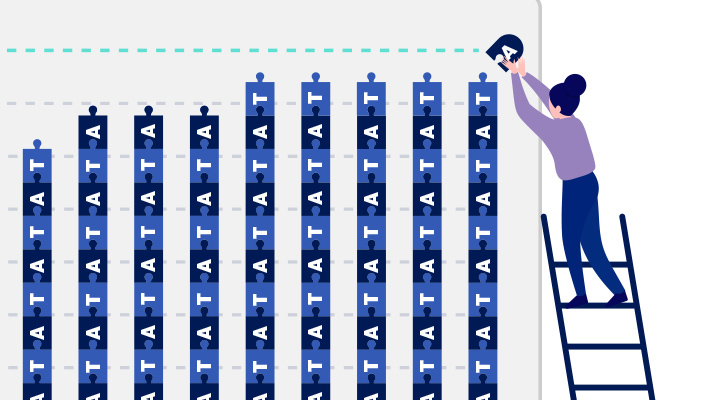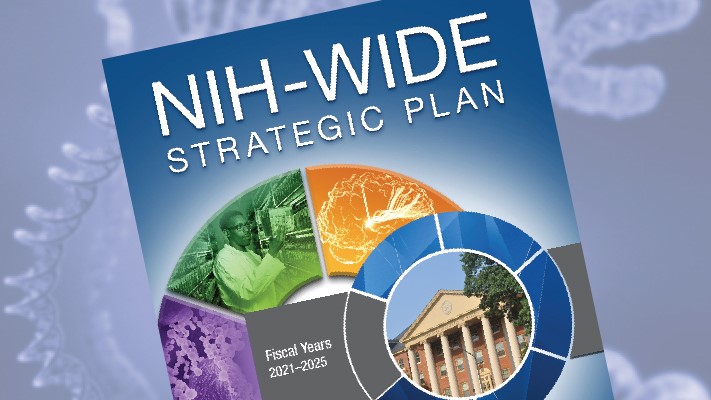NHGRI extramural programs evolve in response to the dynamic nature of genomics
As happens around this time every year, the U.S. federal government is working to establish and approve its budget for the next fiscal year, which officially begins on October 1, 2021. So far, the appropriations process looks promising for NIH, with both President Biden and the House of Representatives calling for an overall budget increase compared to the current fiscal year.
The proposed NIH budget also includes funds to establish the Advanced Research Projects Agency for Health (ARPA-H), which will aim to accelerate the pace of scientific breakthroughs for diseases by making “pivotal investments in breakthrough technologies and broadly applicable platforms, capabilities, and resources that have the potential to transform important areas of medicine and health and that cannot readily be accomplished through traditional research or commercial activity.” NIH and the White House Office of Science and Technology Policy are organizing a series of virtual listening sessions to obtain feedback about ARPA-H. Information about these sessions can be found on the ARPA-H events page. Of note, session #9, which will take place on Wednesday, August 11, will be geared toward research on genomics, biomedical engineering and imaging, and health informatics and medical libraries.
All the best,
![]()
In This Issue
- NHGRI extramural programs evolve in response to the dynamic nature of genomics
- New infographic showcases first gapless human genome sequence
- NHGRI announces $80 million in funding to discover genetic causes of single-gene disorders
- NIH funding opportunity to develop cultures of inclusive excellence at NIH-funded institutions
- NHGRI researchers expand genomics workbook to help families assess disease risks
- NIH Strategic Plan outlines vision for biomedical research direction, capacity, and stewardship

Pursue advances in genomics as part of a vibrant global community of genomics researchers and funders — the challenges in genomics require the collective energies and creativity of a collaborative international ecosystem that includes partnerships among researchers, funders, and other stakeholders from academia, government, and the commercial sector.
“The Human Genome Project was a bold initiative spearheaded by the US and UK governments initially with the purpose of developing and freely sharing resources, knowledge, and experiences world-wide and in a timely fashion. This new approach to sharing information along with access to the internet is enabling scientists from advanced and developed nations to facilitate research in their own countries. Having taught mathematics and science in a developing country in the 60s, I was very impressed with these students’ thirst for knowledge and their wanting to have a positive impact on the future of their country. Fast forwarding to today, I know that genomics will open up opportunities for graduate students and junior scientists in under-resourced countries to view genomics as a viable career path and an opportunity to improve the health of their nation’s citizens.”
Bettie J. Graham, Ph.D. (Director, NHGRI Division of Extramural Operations)
Seminar Series: Bold Predictions for Human Genomics by 2030
Session 7: September 16, 2021, 3 p.m. to 4:30 p.m. ET
Prediction: The clinical relevance of all encountered genomic variants will be readily predictable, rendering the diagnostic designation “variant of uncertain significance (VUS)” obsolete.
Speakers:
-
Heidi Rehm, Ph.D., Broad Institute, Harvard Medical School & Massachusetts General Hospital
-
Douglas Fowler, Ph.D., University of Washington
Moderator:
- Ben Solomon, M.D., NHGRI

About The Genomics Landscape
A monthly update from the NHGRI Director on activities and accomplishments from the institute and the field of genomics.
Last updated: August 5, 2021






